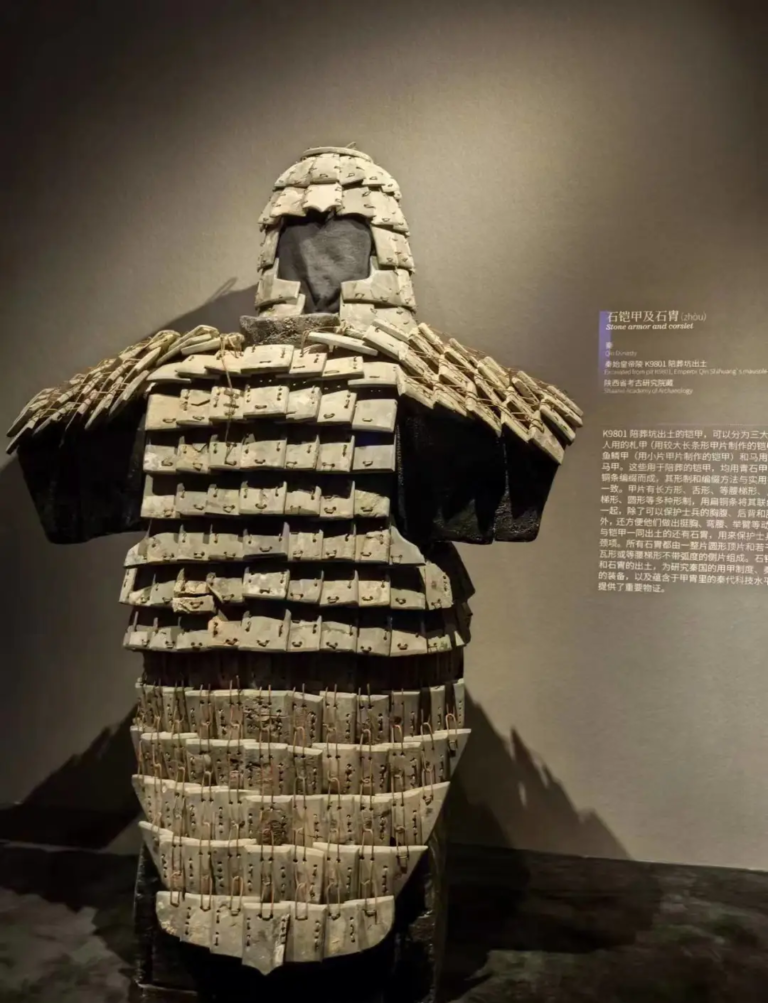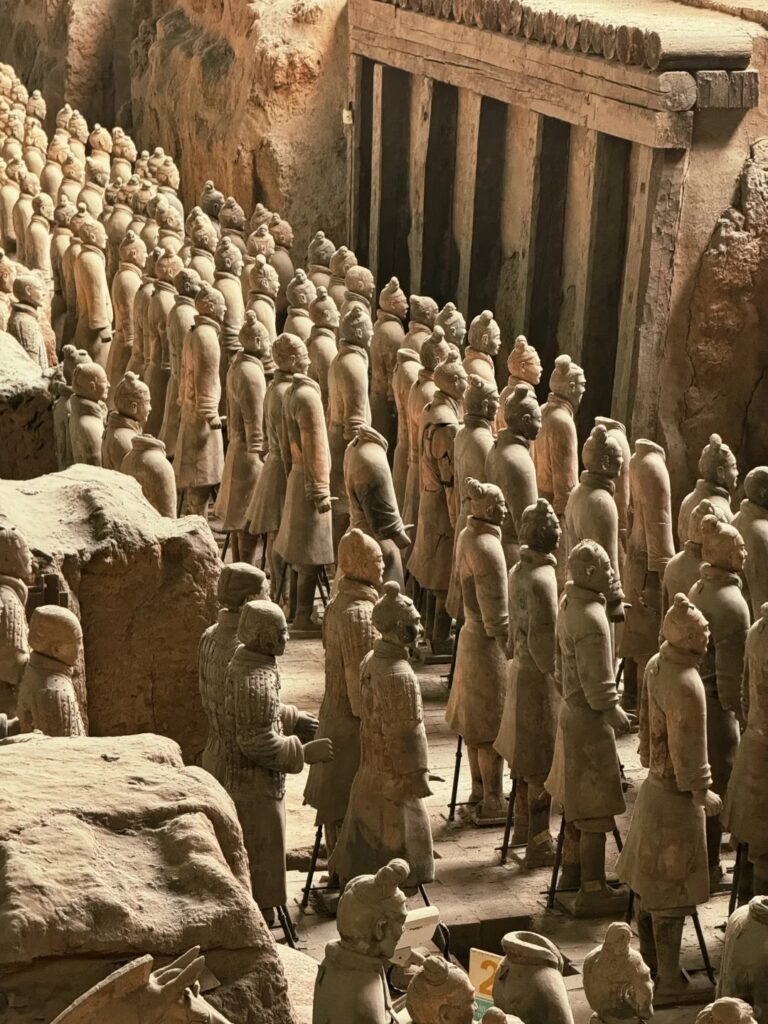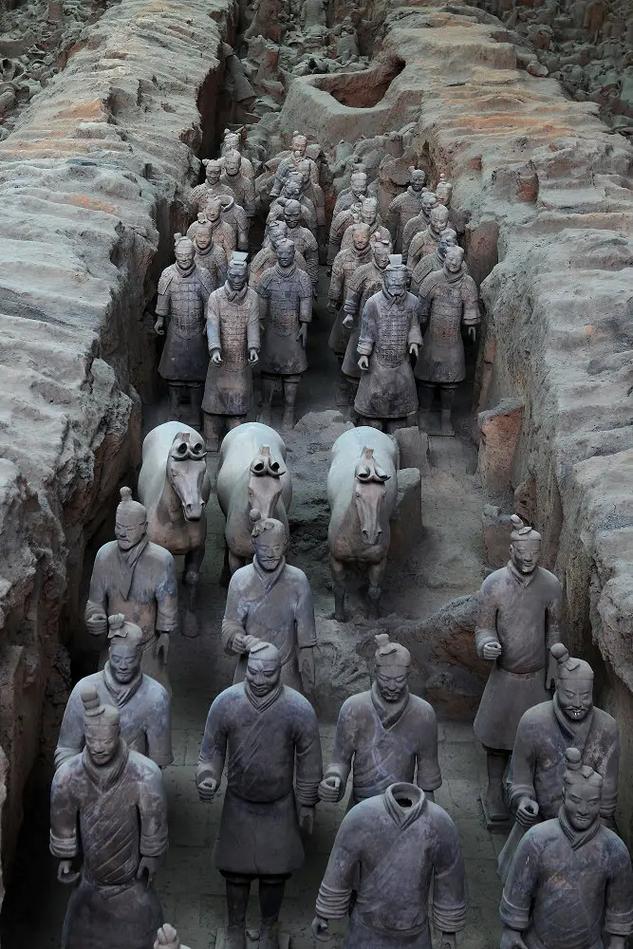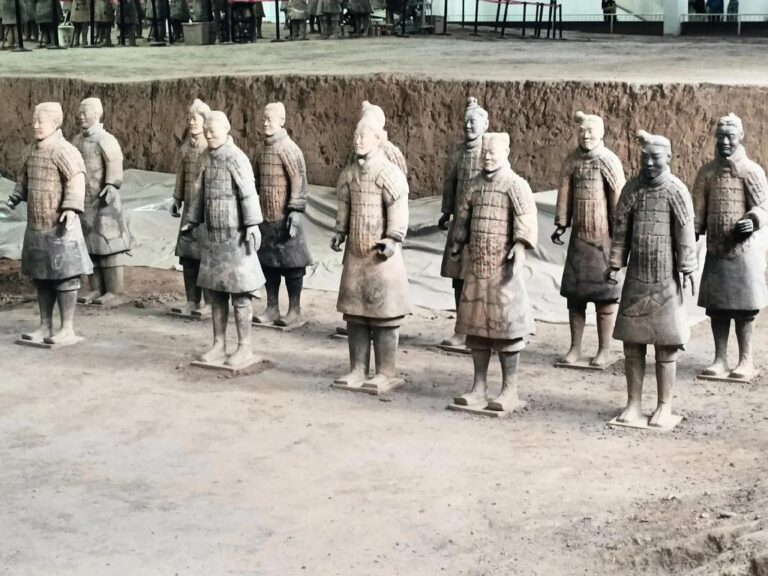Why did the Terracotta Warriors lose their color?
Fading Legions: The Mystery of the Terracotta Warriors’ Loss of Color Revealed
In 1974, farmers drilling a well in Shaanxi, China, accidentally discovered thousands of terracotta soldiers – the Terracotta Army of Qin Shihuang’s Mausoleum – that had been buried underground for more than 2,000 years. These terracotta warriors shocked the world when they were unearthed, but what was even more shocking was that they were not the grayish-yellow color we see today, but rather an “underground army” dressed in bright colors such as red, green, purple and blue. Why these colors disappeared so quickly after the excavation? Behind this is both the miracle of ancient craftsmanship and the challenge of modern science.
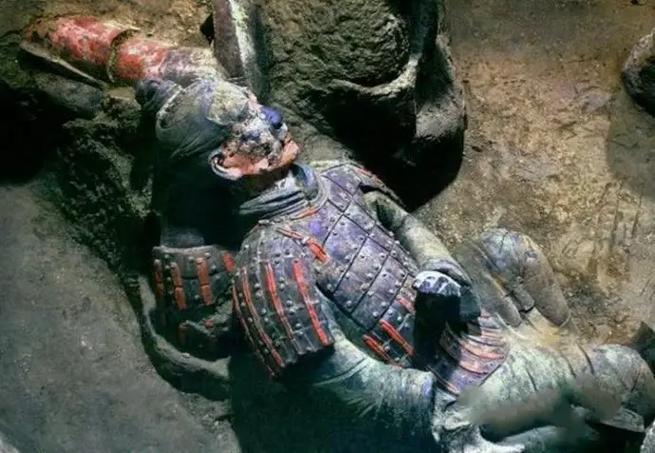
First, from brilliant to gray: a race against time
When archaeologists first cleaned out the complete terracotta warriors, they found that the surface of the terracotta warriors remained vermilion, pink purple, sky blue and other color blocks, and can even see the gradient effect of the artisan halo. However, these colors only lasted from a few minutes to a few hours: some began to curl within 15 seconds, others flaked off completely within four minutes, like “freshly unearthed history evaporating before your eyes”.
What are the culprits of color fading?
1. Dramatic changes in the environment: Terracotta Warriors and Horses have long been buried in moist soil, humidity up to 90% or more. Once exposed to dry modern air, the surface layer of raw lacquer (a natural resin coating) will rapidly lose water and shrink, causing the pigment layer to crumble and fall off like an eggshell.
2. Microorganisms and Salt: Mold spores and soluble salt from the ground attach to the surface of terracotta figurines. After being unearthed, the salt crystallizes and expands repeatedly with changes in humidity, destroying the structure of the paintings like a “miniature bomb.
3. Ultraviolet damage: Ultraviolet rays from sunlight accelerate the oxidation of pigments, especially on sensitive colors such as red and purple, causing irreversible damage.
II. Brilliance and Fragility of Ancient Craftsmanship
The painting technique of Qin Dynasty craftsmen is a miracle. They first painted 1-2 layers of raw lacquer on the surface of terracotta figurines as a primer, and then colored them with mineral pigments. This process allowed the colors to be preserved for thousands of years in the humid underground environment, but it also sowed hidden dangers – the stability of raw lacquer is highly dependent on constant humidity.
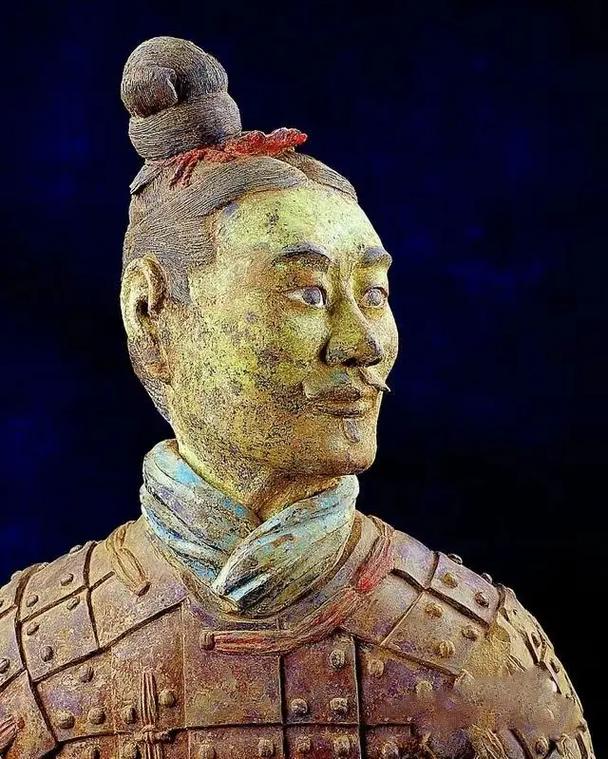
Pigment secrets
The legend of “Chinese purple”: The purple color on the armor of the Terracotta Warriors is not a natural mineral, but a synthetic “barium copper silicate”. This color was not reinvented by German chemists until the 20th century, but the Qin people mastered its synthesis as early as the 3rd century BC.
The color code of the hierarchy: the armor of the generals was trimmed in purple, the soldiers’ robes in red and green, and the horses’ manes outlined in black. The colors are not only aesthetically pleasing, but also imply military hierarchy.
However, it is this advanced technology that makes conservation so much more difficult. Raw lacquer and terracotta figurines have different expansion coefficients, and the difference in shrinkage rates between the two after excavation directly leads to “color disintegration”.
Third, modern technology how to save the color?
In the face of the fading crisis, Chinese and German scientists have cooperated in a 30-year-long research:
1. Emergency protection: Nowadays, newly unearthed painted figurines are immediately sprayed with antiseptic (e.g., polyethylene glycol) and wrapped in plastic film to maintain humidity, and then the whole thing is transferred to the laboratory for treatment. 2.
2. restoration techniques: using microscopes and 3D scans, scientists reposition the dislodged paint fragments like a jigsaw puzzle and “stick” them back into the figurines with special adhesives.
3. Preventive research: The laboratory simulated the underground environment to test the effect of different temperatures and humidity on the lacquer, and eventually found that the best solution was to replace the moisture in the lacquer layer with an anti-shrinkage material.
These techniques have extended the color preservation of newly unearthed terracotta figurines from a few minutes to at least 10 years, and even reproduced the original appearance of the terracotta warriors through digital restoration.
IV. Unsolved Mysteries and Future Challenges
Despite the advances in technology, mysteries still remain:
The Qin Dynasty was known as “still black”, so why were the army costumes so colorful? Scholars speculate that black is the ceremonial color, and the battlefield needs to use bright colors to distinguish between enemy and rank.
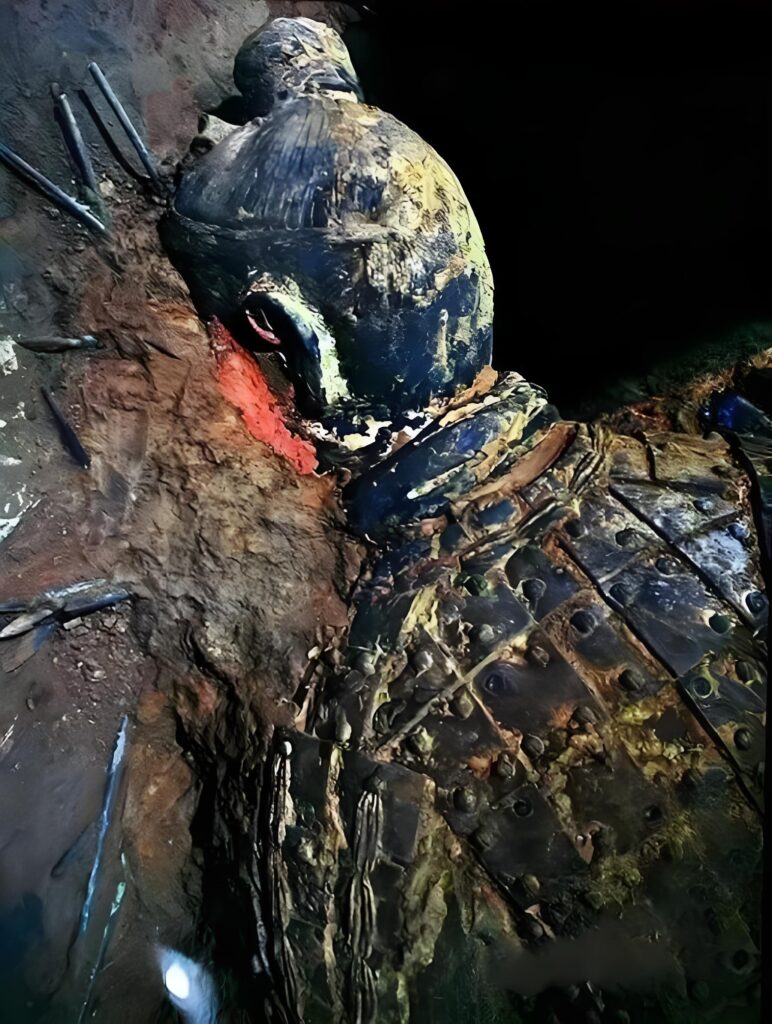
Why was “Chinese Purple” lost with the fall of the Qin Dynasty? It is possible that the formula was complex and mastered only by royal craftsmen.
Currently, less than 1% of the mausoleum of Qin Shi Huang has been excavated, and most of the terracotta figurines are still buried underground. Archaeologists have opted to “hold off” on excavations, waiting for better technology – after all, every excavation is an irreversible adventure.
Conclusion: The Dialogue of Civilizations Behind the Colors
The fading of the Terracotta Army is not only a technical problem, but also a dialogue between ancient civilization and modern science. The Qin people’s obsession with color reflects the aesthetic and organizational skills of China’s early empire; while today’s conservation efforts demonstrate mankind’s reverence for history. As a restored figurine of a painted general shows: faded colors can be awakened by technology, but the codes of civilization still need to be deciphered with a humble heart.

